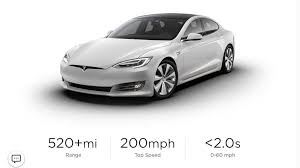
Breaking News
 Now that the U.S military has stolen $17 trillion worth of oil from Venezuela...
Now that the U.S military has stolen $17 trillion worth of oil from Venezuela...
 10 Coolest Tech at CES 2026 (Day 1)
10 Coolest Tech at CES 2026 (Day 1)
 UAE cuts funds for citizens keen to study in UK over Muslim Brotherhood tensions
UAE cuts funds for citizens keen to study in UK over Muslim Brotherhood tensions
 A potential Rio Tinto-Glencore mega-merger would represent far more than a corporate consolidation
A potential Rio Tinto-Glencore mega-merger would represent far more than a corporate consolidation
Top Tech News
 World's most powerful hypergravity machine is 1,900X stronger than Earth
World's most powerful hypergravity machine is 1,900X stronger than Earth
 New battery idea gets lots of power out of unusual sulfur chemistry
New battery idea gets lots of power out of unusual sulfur chemistry
 Anti-Aging Drug Regrows Knee Cartilage in Major Breakthrough That Could End Knee Replacements
Anti-Aging Drug Regrows Knee Cartilage in Major Breakthrough That Could End Knee Replacements
 Scientists say recent advances in Quantum Entanglement...
Scientists say recent advances in Quantum Entanglement...
 Solid-State Batteries Are In 'Trailblazer' Mode. What's Holding Them Up?
Solid-State Batteries Are In 'Trailblazer' Mode. What's Holding Them Up?
 US Farmers Began Using Chemical Fertilizer After WW2. Comfrey Is a Natural Super Fertilizer
US Farmers Began Using Chemical Fertilizer After WW2. Comfrey Is a Natural Super Fertilizer
 Kawasaki's four-legged robot-horse vehicle is going into production
Kawasaki's four-legged robot-horse vehicle is going into production
 The First Production All-Solid-State Battery Is Here, And It Promises 5-Minute Charging
The First Production All-Solid-State Battery Is Here, And It Promises 5-Minute Charging
 See inside the tech-topia cities billionaires are betting big on developing...
See inside the tech-topia cities billionaires are betting big on developing...
Tesla: Significant Range Increase (30%) Possible Without New Chemistry

At Battery Day, Tesla has outlined a plan to significantly improve the energy density of its battery systems, reduce the price per unit, and also reduce investment costs in new manufacturing capacity.
Here we will stop for a while at the range increase, which is expected to reach 54%, as a result of multiple factors.
Cumulative outcome:
Range increase by 54%
Price reduction ($/kWh) by 56%
Investment ($/GWh) reduction by 69%
54% is not a small improvement, especially since Tesla's batteries are considered as one of the most energy-dense already.
The company intends to achieve its goal through improvements in several major areas.
Range increase factors:
cell design: 16%
anode material: 20%
cathode material: 4%
cell vehicle integration: 14%
Total range increase: 54%

 Storage doesn't get much cheaper than this
Storage doesn't get much cheaper than this

